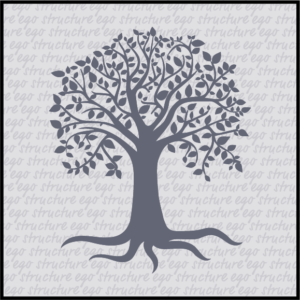 WHAT IS EGO STRUCTURE?
WHAT IS EGO STRUCTURE?
The term “Ego” has many definitions, but the one applicable to the Enneagram derives from both Freudian psychology and spiritual traditions. The nine Enneagram types represent nine distinct aspects of the human Ego.
The Psychological Ego
From the Freudian psychological perspective, the Ego navigates between the Id, or unconscious impulses, and the Superego, the internalized societal rules and norms that hold us in check. In the Freudian sense, the Ego is the self – often defined as the rational self – in daily life. It is the individual’s inner architecture, as well as how he or she interacts with and responds to the external world. The function of the Ego is even more intricate; it provides individuals with both continuity and consistency by providing a personal point of reference that connects events of the past with experiences in the present and possibilities or probabilities of the future. The past is accessed through subjective memories, the future through anticipation and imagination, with the Ego linking all three elements together. A person’s Ego-ideal is part of the Ego, but refers specifically to how a person most wants to perceive him- or herself, even if true reality doesn’t quite match.
The Spiritual Meaning of Ego
The Ego, from a spiritual perspective, is the over-identification with what you perceive as self and a specific over-identification with your thoughts and thought patterns, emotions and emotional response patterns, and behavior and behavioral patterns. Another word for identification is attachment, and this refers to being attached to your self-perception, your thoughts, feelings and behaviors as if these are all of who you are when, in fact, your truest self or essence goes far deeper. From a spiritual perspective, the path to greater consciousness is to increasingly dis-identify from or lessen one’s attachment to the Ego.
Part 3 blog in this series illustrates the specific components of Ego-structure.
The Art of Typing | This blog is an adapted excerpt from Ginger Lapid-Bogda’s new book, The Art of Typing: Powerful Tools for Enneagram Typing. In it, you’ll find infographics of the 9 different Enneagram Ego- structures, insightful questions and delightful illustrations to help differentiate between types, and other important factors to consider: overlays such as family, culture and gender, Centers of Intelligence, wings and arrows, Enneagram subtypes, and more.
Ginger Lapid-Bogda PhD, the author of seven best-selling Enneagram-business books, is a speaker, consultant, trainer, and coach. She provides certification programs for professionals around the world who want to bring the Enneagram into organizations with high-impact business applications, and is past-president of the International Enneagram Association. Visit her website: TheEnneagramInBusiness.com. ginger@theenneagraminbusiness.com

Comments are closed.